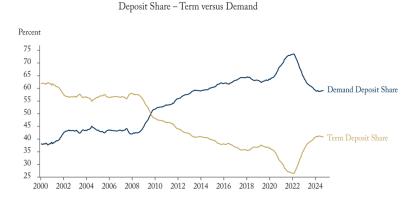With the new NAFTA talks underway, the worst-case scenario for Canada is one where the United States walks out and withdraws from the agreement entirely. In such an extreme circumstance, the 1989 Canada-US Free Trade Agreement could be dusted off, leaving trade mostly duty-free between the two countries. But there is no guarantee that the US would not seek to change that as well. Two million Canadian jobs depend on exports to the United States.
Which Canadian industries would be most vulnerable to a collapse of free trade between the two countries?
In this edition of Graphic Intelligence, we profile the constellation of Canadian industries plotted against two measures of vulnerability to new barriers to Canada-US trade. On the left axis is the share of that industry’s jobs directly relying on exports to the US. On the right axis is an indicator of the “supply chain integration” of that industry with the US, as measured by US input into exports from Canada to the US. This captures the fact that parts and other inputs may cross the border a number of times prior to a final product being shipped – potentially magnifying the impact of reinstated custom duties on that industry. We highlight (in gold) the Canadian industries that are particularly vulnerable, and whose exports to the US generate directly or indirectly 10,000 or more Canadian jobs.
Hover over a bubble to see more detailed information about that industry.
Oops! If you are seeing this message, it may be because the chart is not displaying correctly. Try upgrading your browser or enabling Javascript.
A. Jacobs and D. Schwanen, C.D. Howe Institute | Source: Statistics Canada
As the graphic above shows, auto manufacturing is the standout story both in terms of integration with US manufacturing and the number of Canadian jobs at stake. But other important job-generating goods producing industries in Canada include chemicals, plastics and rubber products, food manufacturing, aerospace, machinery, semiconductors, electronic equipment, pharmaceuticals, metals, paper products and textiles. They are all either significantly integrated with US production, highly dependent on the US market for their output, or both. Other sectors at risk based chiefly on their very large share of output directed at the US market include oil and gas extraction, pulp and paper, potash mining, and furniture.
Reading along the horizontal axis – which indicates cross-border integration of industries – also illustrates the sensitivity of US industries themselves to such disruption.
Therefore, a walkout would inflict plenty of domestic pain on the United States itself, as its negotiators surely know.
Daniel Schwanen is Vice President, Research; and Aaron Jacobs is a Researcher at the C.D. Howe Institute.




